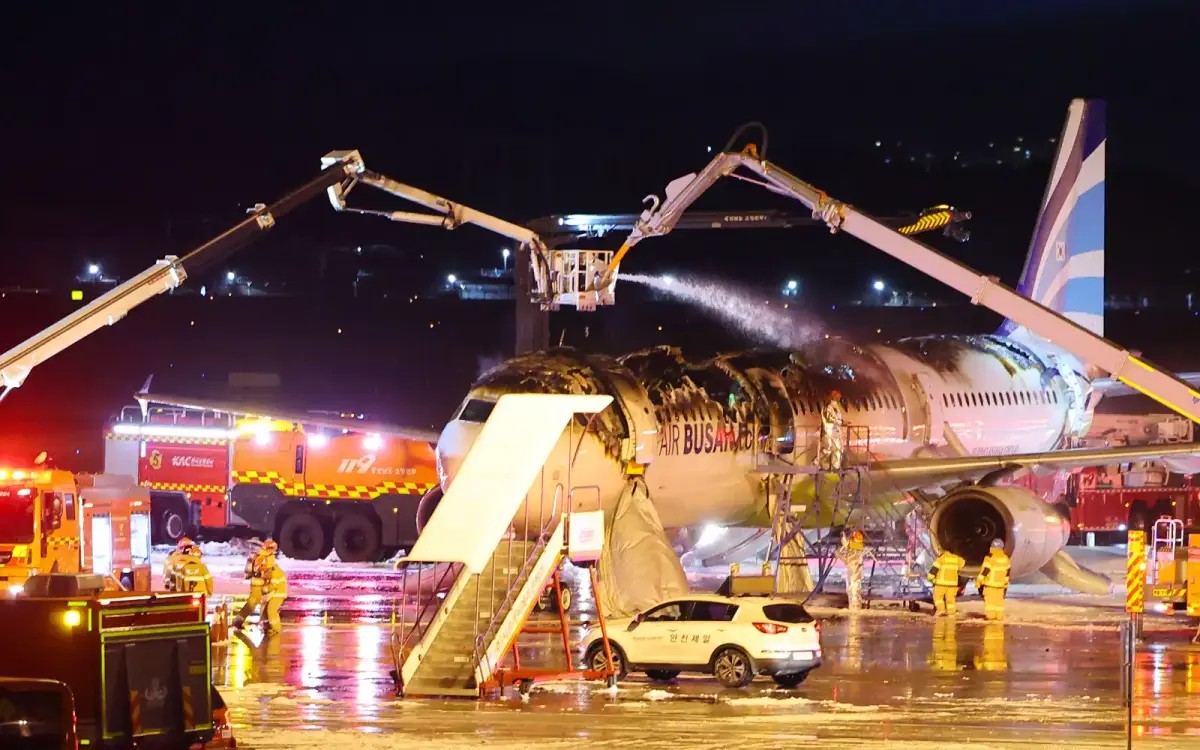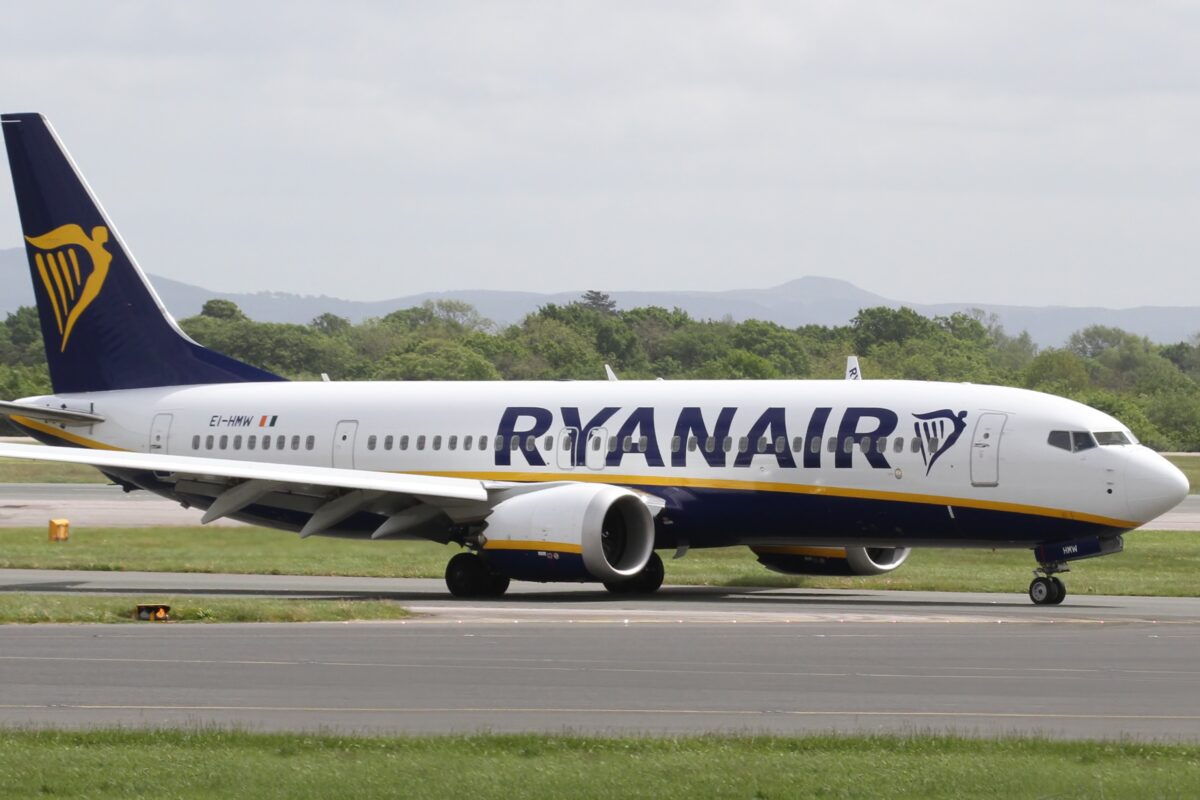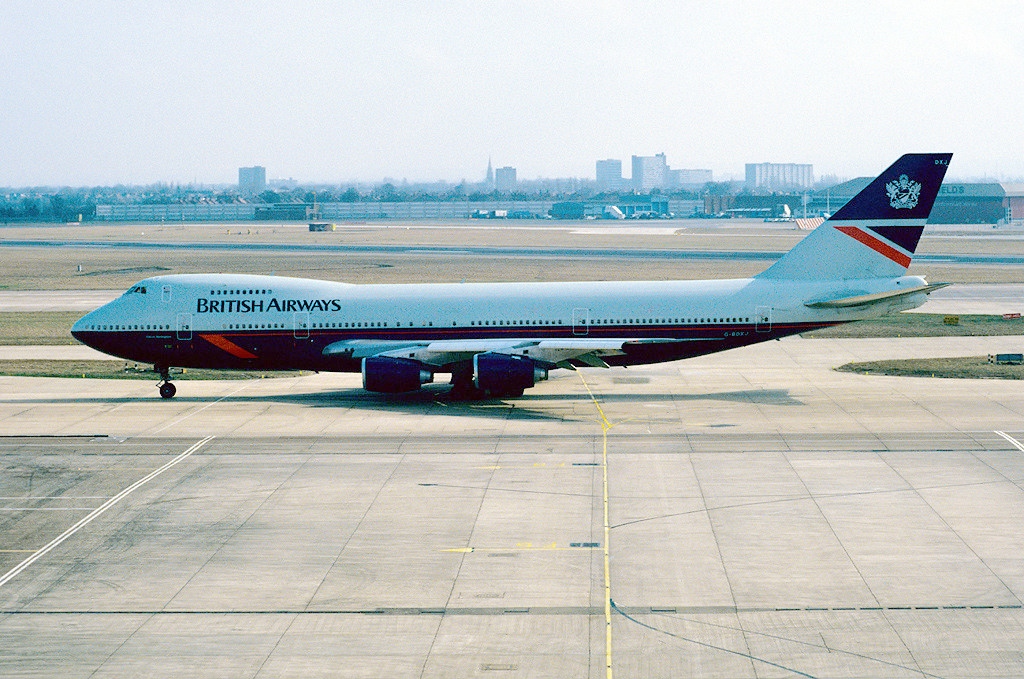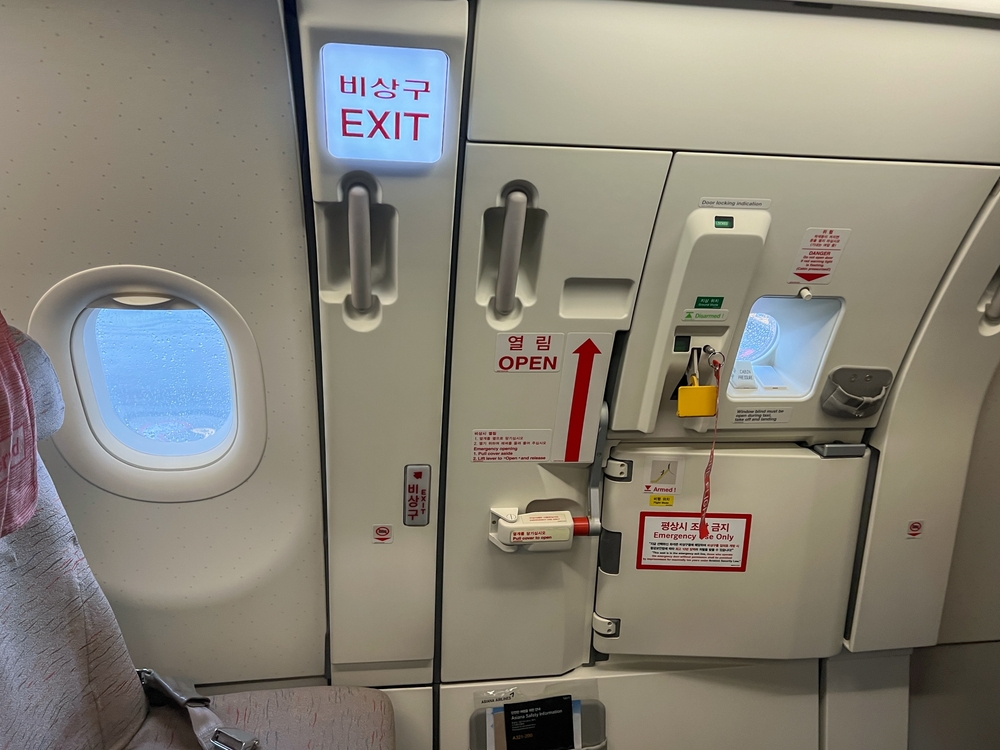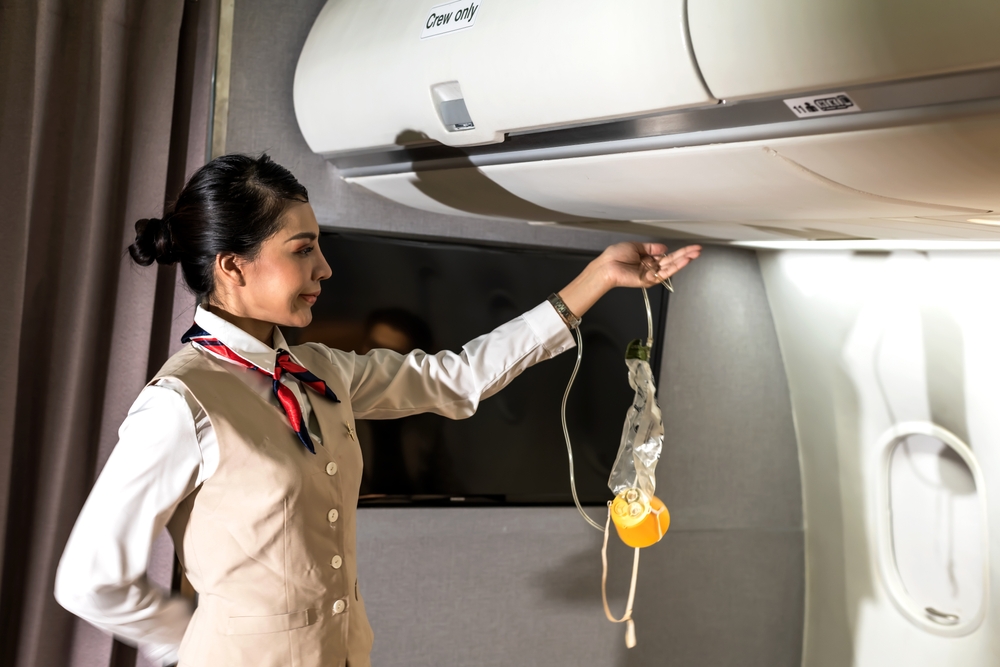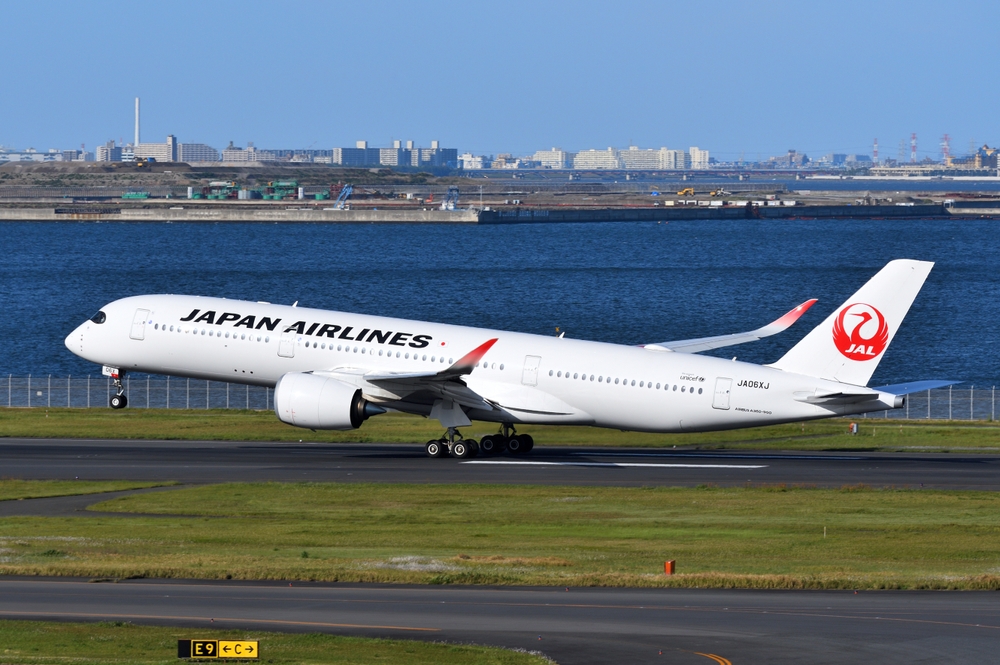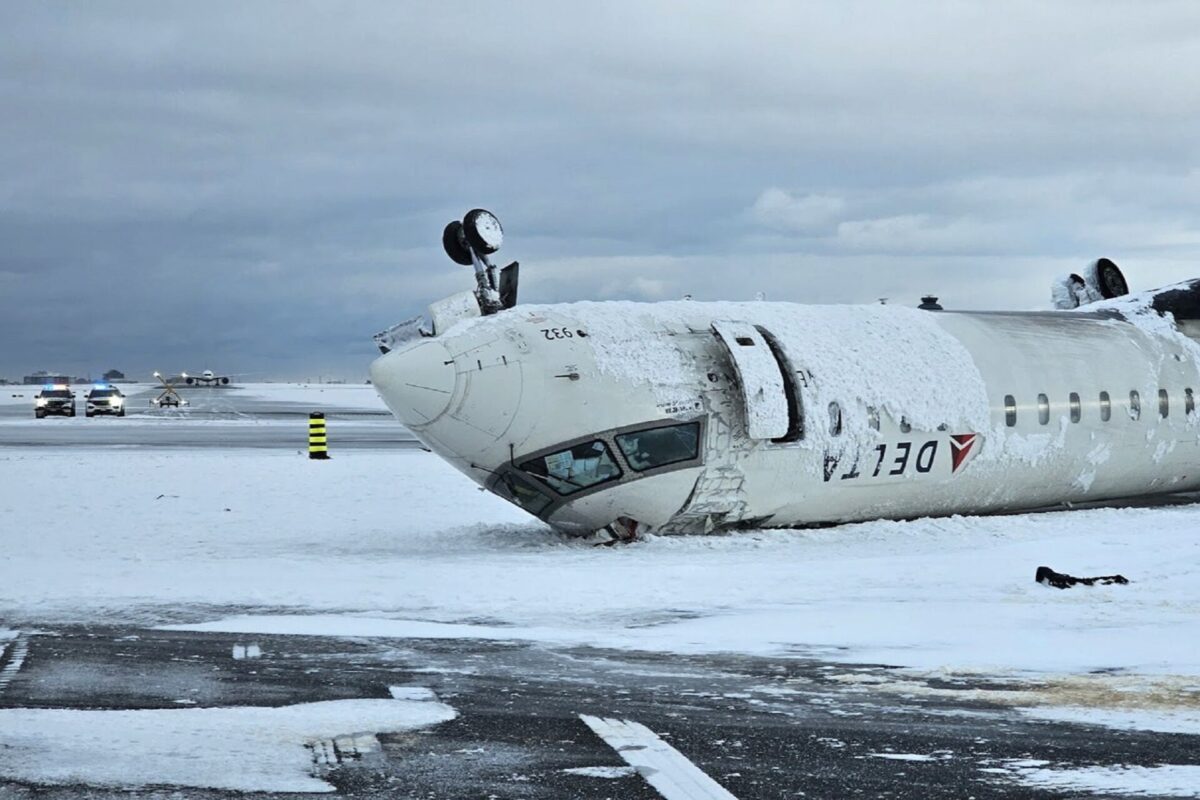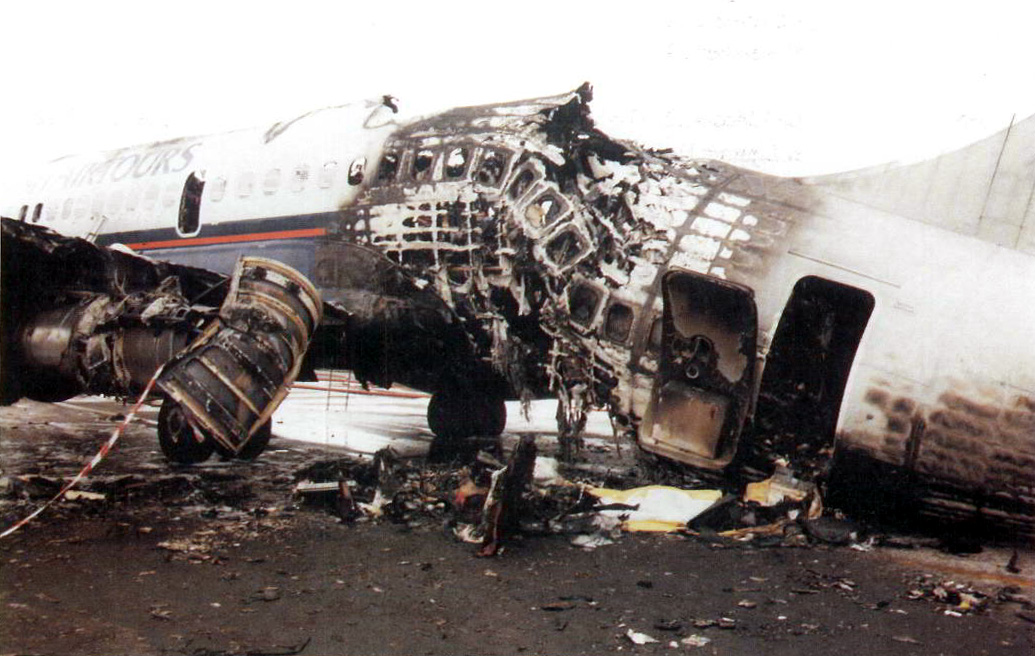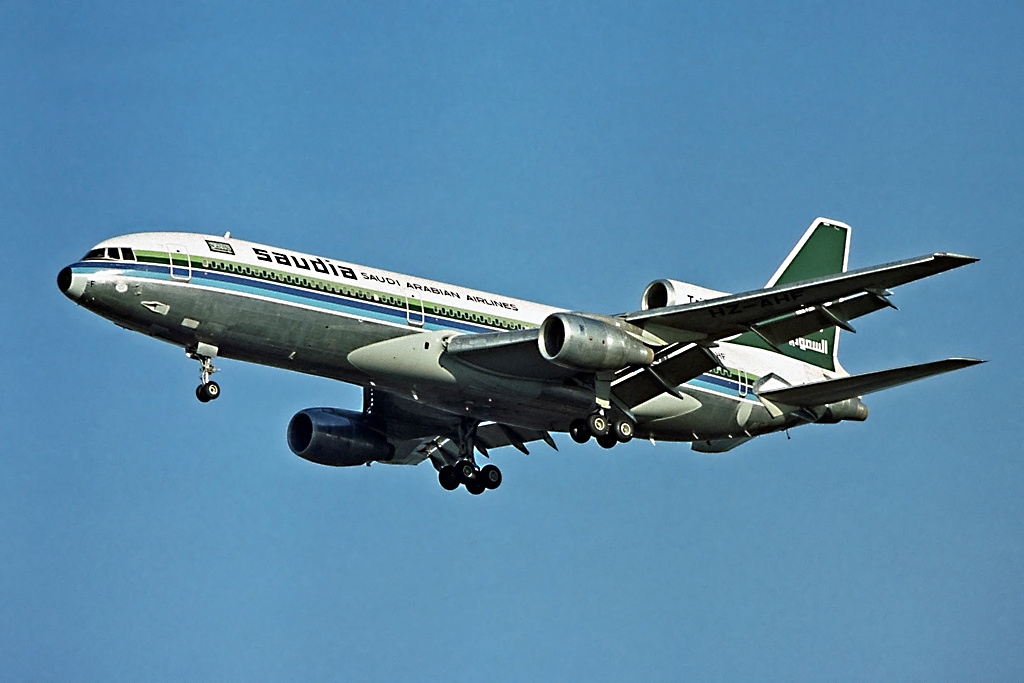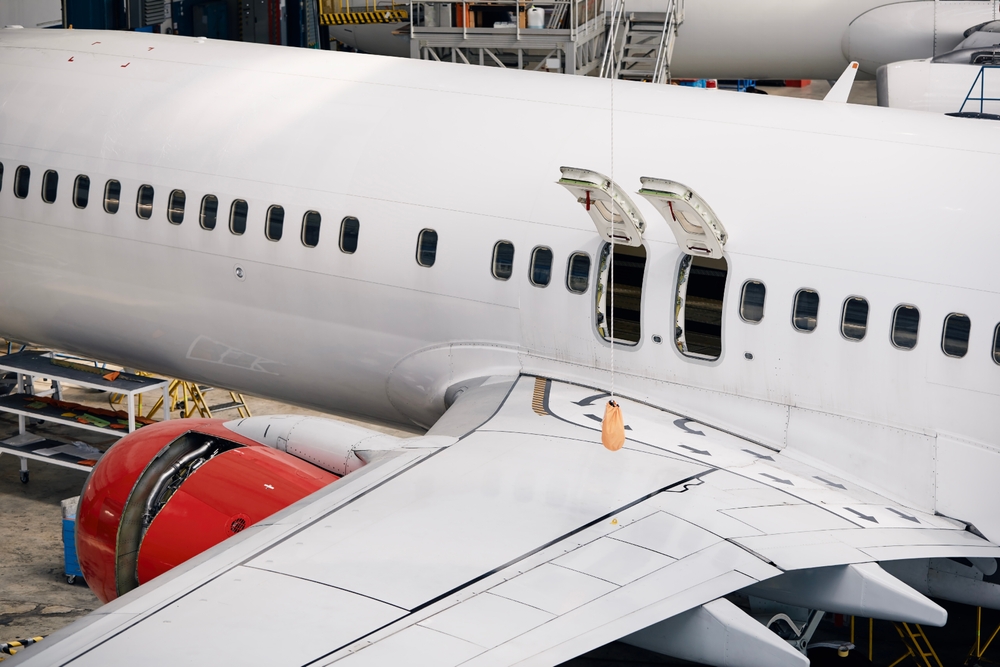Although statistically, air travel is one of the safest forms of transportation, incidents do occur, albeit rarely. From burst tires to major incidents, the degree of seriousness of the event will dictate how any crew will deal with that particular scenario. While more minor incidents can simply be dealt with by the aircraft returning to a parking gate under its own power, more serious events may require the evacuation of all passengers from the aircraft for their own safety as quickly and efficiently as possible.
An emergency evacuation of an aircraft is defined as ‘the urgent abandonment of an aircraft utilising all useable exits.’ While emergency evacuations can be carried out on water (the Hudson River US Airways A320 accident of 2009, for example), such evacuations are extremely rare, meaning that evacuations are largely conducted on land, with varying levels of success in terms of numbers managing to escape safely and without injury.
In this article, AeroTime examines the background and regulations to emergency evacuations and questions why some evacuations have had better outcomes than others.
Emergency evacuation scenarios
Emergency evacuations can become necessary for a huge number of reasons. However, it should be stated that the decision to evacuate an aircraft is never taken lightly, as passenger injuries can and do occur. A crew must fully evaluate any scenario where an emergency evacuation may become necessary as quickly as possible, often in moments of high stress and workload, and decide on the safest course of action under the prevailing circumstances.
After all, a failure to evacuate an aircraft promptly can lead to unnecessary deaths or injury to crew and passengers.
For example, evidence of an in-flight fire, or the detection of fumes or smoke in the cabin or cockpit, is likely to be dealt with as aggressively as possible by the crew. Such incidents have become far more common in recent times with the phenomenon of thermal runaway, where Lithium-Ion batteries in personal electronic devices overheat. If the aircraft is airborne at the time of the detection, a decision to immediately divert to the nearest appropriate airport is likely to be initiated.
Should the emergency prove unable to be contained by the crew using fire extinguishers or fire blankets, the most appropriate course of action is to remove the passengers and crew from the risk once safely on the ground. Similarly, with a fire on the ground (such as seen in January 2025 when an Air Busan Airbus A321 caught fire while waiting to depart), should it become apparent to the cabin crew that the fire cannot be contained, then an evacuation should immediately be ordered.
Yet, it is not just fires that are the cause of emergency evacuations. In the event of a major technical or structural failure of an aircraft, such as an uncontrolled engine failure or engine fire during ground operations, an incident during the take-off or landing roll, or any other scenario that results in damage to the aircraft itself, normally the best course of action for the crew is to order an evacuation, always erring on the side of caution and risk minimalization.
In more recent times, the nature of risks that require evacuation to be carried out has widened. External factors such as a bomb threat or other security-related risks have led to aircraft being evacuated, again (usually) out of an abundance of caution. However, as the reality of the threat has to be quickly balanced against the risks of injuries caused by any evacuation, full cooperation and coordination between the crew and the authorities dealing with the incident are key in such situations.
Evacuations – the regulations
With modern commercial aircraft, regardless of size or capacity, their certification (and ultimately their entry into service) will depend on the aircraft manufacturer being able to demonstrate that the aircraft, in its maximum density configuration, can be completely evacuated within 90 seconds using only half of the total number of emergency exits available on the aircraft.
The restriction regarding using only half of the exits is imposed to simulate the potential for emergency exits being blocked or failed evacuation devices (such as inflatable slides) being unusable due to fire or structural damage. The imposition of the 90-second rule has become the established industry-accepted limit. Statistically, in tests run by airworthiness authorities, 90 seconds is the average amount of time before what is known as flashover occurs, where a small onboard fire can instantaneously become uncontrollable and potentially fatal within a split second.
Given that all passengers and crew must be able to evacuate within this time limit, aircraft must be equipped with enough emergency exits to allow this to happen. Historically, most commercial aircraft were designed and fitted with a standard layout of exits, regardless of the specific operator. However, since the birth of the low-cost airline phenomenon, where increasing numbers of passengers are accommodated into an airframe, authorities have insisted that more emergency exits are installed on that aircraft type to ensure that the 90-second rule can still be complied with.
As an example of this, Boeing 737 MAX 8s operated by Ryanair differ from other examples of the same type in service with other carriers. A Ryanair aircraft accommodates 197 passengers in a single-class high-density configuration. Compare this to United Airlines, which seats 166 passengers in its Boeing 737 MAX 8s. Ostensibly the same aircraft, yet the former carrier’s planes need an additional emergency exit installed aft of the wing, either side of the fuselage, which allows for more passengers to exit within 90 seconds.
Compare this scenario to British Airways in the mid-1980s, which decided to reduce the number of emergency exits on the main deck of its Boeing 747-200 fleet from ten to eight by making the main overwing exit unusable. The move would allow the carrier to fit another two rows of economy class seats into the main deck cabin, adding 20 seats to each flight. Only following successful trials conducted by the UK Civil Aviation Authority in conjunction with the carrier was British Airways permitted to introduce this modification fleetwide, with a resultant impact of boosting economy revenue figures for each flight.
Depending upon the aircraft type, emergency exits can include normal boarding and service doors, smaller exits (such as those on Ryanair MAX aircraft), and overwing exits. The flight crew can also escape through cockpit windows or hatches installed on the flight deck. All exits above a certain height must be equipped with boarding stairs, inflatable evacuation slides, or emergency egress ropes (see below).
Evacuation slides, the most common means of escape on larger commercial aircraft, are inflatable devices that facilitate the rapid evacuation of passengers and crew in an emergency. Slides are required on all passenger-carrying aircraft where the door sill height (measured as the normal height above ground level) is such that able-bodied passengers would be unable to jump or step down from the exit without a significant risk of injury.
This has been widely interpreted by regulatory requirements as meaning slides must be installed at all aircraft doors where the floor is 1.8 metres (6 feet) or over above the ground. Slides are also required on overwing exits when the height of the wing above the ground, with the flaps fully extended, exceeds the maximum certified distance (1.8 metres/6 ft) or where an evacuation route ahead of the wing is intended.
Some slides are also designed to serve as rafts when detached from the aircraft in the event of the aircraft having to ditch on water, although life rafts must also be supplied.
Common issues regarding evacuations
While emergency evacuation trials are always held before an aircraft type receives certification, and cabin crew regularly train in aircraft emergency evacuation procedures and techniques, there are always unforeseen factors that occur in real-life scenarios that mean evacuations do not run as smoothly as they did under test conditions.
The most common safety deficiencies observed during the aircraft evacuation process that have been noted by aircraft accident investigators are often associated with communication failures, delays, the operation of emergency exits, passenger preparedness, and the presence of fire, smoke, or toxic fumes, which can all hamper visibility and spatial awareness.
In an emergency evacuation, effective communications among the crew members and with the passengers are essential for a timely, orderly, and effective response. In particular, communication between the flight deck crew and cabin crew is vital before an order to evacuate is given. As both teams need to act together in diagnosing an emergency, the response must be equally coordinated. However, experience has shown that these vital communication links can be hindered by several different factors.
For example, an inoperative Public Address (PA) system on board could result in the cabin crew and possibly the passengers missing or being unable to hear the initial evacuation command from the flight crew, in addition to other subsequent directions. Equally, inadequate crew communication between the cabin crew and the flight deck could result in a significant delay of the evacuation.
Delay is an important factor in other aspects of an evacuation. It has been found in studies that as much as a minute can pass from the occurrence of an emergency event before the flight or cabin crew initiates an evacuation. Such a time delay can have an obvious impact on the time available for an evacuation, particularly if there is a fire onboard. While the onus lies with the crew to make the call to evacuate, there must always be a full assessment of the risk before an evacuation is ordered. Crews have reported that this dichotomy is one of the hardest decisions they may face in their working lives.
Elsewhere, issues in operating emergency exits and deploying emergency slides have been observed to hinder many evacuations. Cabin crew or passengers could experience difficulty operating emergency exit doors (particularly passengers seated at overwing exits), while inflatable slides may not inflate correctly, detach from the aircraft prematurely, or be affected by high winds, making them unsafe to use. All of these factors have been seen to potentially compromise the success of evacuation.
The presence of fire, smoke, and/or toxic fumes in the cabin is deemed to present the greatest hindrance to a successful evacuation. With restricted visibility, limited visual means of communication, and potentially reducing the number of available exits, passenger behaviour has been observed to change immensely as individuals go into panic mode. As mental and physical capacities become increasingly affected, all of these factors combine, and the potential for a successful evacuation begins to diminish, often rapidly.
Passengers’ lack of preparedness to act appropriately in an emergency, or additionally, for passengers to exhibit adverse or irrational behaviour, cannot be recreated in a test environment. and will only play out during a real-life emergency scenario. Such factors have been seen to seriously hinder emergency evacuations. For example, passengers might not completely understand the danger they are in and might act in a manner disproportionate to the severity of the event.
Such inappropriate behaviours could be being slow or a complete failure to respond to cabin crew instructions, trying to stay close to family members or traveling companions, or even opening overhead compartment storage to retrieve carry-on baggage and trying to exit the aircraft with their bags – a phenomenon that has become increasingly prevalent in the modern age as more people travel with hand baggage only.
The importance of the cabin crew briefing
Aviation authorities worldwide insist that a flight’s cabin crew gives a safety and emergency evacuation briefing before any commercial flight departs. While many passengers choose to ignore these briefings, research and trials have shown that the opening of emergency doors by passengers was proven to be more successful when the passengers had familiarized themselves with the instructions provided in the safety cards, or when a personal briefing was provided by a cabin crew member.
As part of the crew’s pre-departure duties, they are required to provide a safety demonstration to all passengers, which includes full instructions on how to escape the aircraft in the event of an evacuation being ordered.
This briefing will refer passengers to individual safety briefing cards (which legally must be supplied to every passenger) as well as manually pointing out exit locations and floor path lighting for use in poor visibility (see later). The briefing may also provide information regarding the use of evacuation slides at exits (if provided) and may also give instructions on how to open exits.
Those passengers seated in emergency exit rows, or in seat rows adjacent to overwing exits where no cabin crew are located, should be individually briefed on how to open these in the event of an emergency. Cabin crew must be satisfied that all those seated in such rows fully understand the instructions, are physically able to comply, and accept the responsibility of opening the exit in an emergency evacuation. Should they not meet any one of these criteria, then they must be replaced with another passenger who does.
Crew duties
As previously mentioned, orders for an emergency evacuation are conventionally given by the flight’s captain. However, there are examples where this has not been the case, for a variety of reasons. For example, if communication between the flight and cabin crew is not possible and the severity of the unfolding situation in the cabin is judged by the senior cabin crew member to be incompatible with further delay, they are trained to make the evacuation order themselves once safe to do so.
In any circumstances where an evacuation is ordered, the cabin crew is tasked with assessing any immediate dangers that may hinder the evacuation or endanger life. These can include external fires or engines still running before any exit is opened. Additionally, cabin crew stationed at emergency exits must ensure that the exit door fully opens and that the slide inflates adequately and securely.
Once these duties have been completed, the cabin crew is responsible for getting passengers out of their seats with verbal instructions and motivating them to evacuate as quickly and safely as possible. This will involve shouting commands, often with an urgent tone, to head to the nearest exit and leave all their baggage behind.
Traditionally, the cabin crew will be the last to leave the aircraft down the slides once they are sure that all passengers are safely off the aircraft. Once off the aircraft, cabin crew are trained to direct passengers away from the aircraft to a location where they can congregate in safety for further assistance by the airport authority or the airport fire and rescue services.
Evacuation case studies
Over the history of commercial aviation, there have been evacuations that have gone so smoothly that they have assumed textbook status, becoming a blueprint for how evacuations should be carried out. Conversely, there have been others that have not gone as well, resulting in the loss of many lives of those on board. While aircraft safety has improved over the decades and the survivability of aircraft accidents has vastly improved, how well aircraft are evacuated ultimately still plays a key role in how passengers and crew survive aircraft accidents and incidents.
Two relatively recent events have illuminated how an outcome from an aircraft accident can be positively affected by a correctly and efficiently carried out evacuation.
Firstly, in January 2024, a Japan Airlines A350 collided with a Japan Coast Guard turboprop while landing at Tokyo-Haneda Airport (HND) at night. Despite it being dark, and the aircraft suffering severe impact damage and a major subsequent fire (which eventually encompassed and destroyed the entire aircraft), all 379 passengers and crew remarkably escaped from the aircraft without serious injury. Five crewmembers on the turboprop aircraft were killed in the accident.
Accident investigators praised the Japan Airlines crew for conducting an orderly and highly effective evacuation, involving the largest number of passengers off a single aircraft for many years.
A further example of how aircraft evacuations should be carried out occurred in February 2025 when a Delta Air Lines (operated by Endeavour Air for Delta Connection) Bombardier CRJ900 overturned as it landed at Toronto-Pearson International Airport (YYZ). The aircraft heavily impacted the runway, causing the gear to collapse and a wing to detach. The aircraft, having overturned, slid several hundred feet, coming to rest with a fire burning in the aft section. The airport fire and rescue service was quickly on scene to extinguish the fire.
Of the 80 passengers and crew onboard the aircraft, there were no fatalities. While 21 passengers received minor injuries, only four were hospitalized, with the last leaving medical care after three days. Survivors stated that the prompt actions of the crew helped in the swift evacuation of all onboard with no severe injuries or deaths resulting.
In an example of where the presence of smoke in the cabin can inhibit an effective evacuation, in August 1985, a Boeing 737-200 operated by British Airtours (a subsidiary of British Airways) suffered an engine fire upon take-off at Manchester Airport in the UK. The fire quickly spread to the rear of the aircraft cabin when the plane pulled off the runway due to the flight crew erroneously parking it into the wind. Of the 137 passengers and crew onboard, 55 died, mostly as a result of smoke inhalation.
The lack of visibility in the cabin, the toxicity of the smoke, plus the unavailability of emergency exits due to the external fire on one side of the aircraft, were all found to have contributed to the sizeable loss of life. Major changes resulted from the accident (see ‘Cabin advancements to aid evacuation’ below).
Lastly, an event which remains in aviation folklore as a complete failure of an aircraft’s crew to adhere to evacuation procedures occurred in August 1980, when a Saudia Airlines Lockheed Tristar made an emergency landing in Riyadh, Saudi Arabia. Upon landing, the aircraft was observed to have a visible fire taking hold in the passenger cabin, yet for reasons that were never determined, the engines were kept running for three minutes after landing, meaning that the airport fire service could not approach the aircraft.
Curiously, at no stage was an evacuation ordered or put into action, resulting in the loss of all 287 passengers and 14 crew on board the aircraft. A major cause of the huge loss of life was attributed to the various failures by the flight crew, along with a complete failure of coordination or communication with the cabin crew, who could have instigated an evacuation.
Cabin advancements to aid evacuation
As is often the case, one positive step from past aviation accidents is that technology and other improvements can be adopted so that emergency evacuations and the survivability of aircraft accidents are improved for the future. The example above of the British Airtours Boeing 737 at Manchester Airport, in particular, gave rise to several key advancements in aviation safety that are still widely used today.
The adoption of floor aisle lighting strips, which also change colour as you reach an overwing exit, was one key recommendation that came out of the disaster, with survivors stating that their escape was severely hindered by a lack of visibility in the cabin due to smoke. Additionally, another proposal that was adopted is that plug-type emergency overwing exits should be discarded outwards from the cabin. In the Manchester incident, the exit doors were pulled inside the cabin and placed on the seats. They eventually fell into the aisle, blocking the exits and hindering escape.
In time, such exits have been replaced with exits that hinge outwards from their top edge, meaning that they do not have to be manually handled at all in the event of an emergency. Another advancement in evacuation practice is the addition of a phrase that a passenger’s nearest exit may be behind them, to avoid a surge forward in restricted aisle spaces with everyone on board struggling to reach the front of the cabin.
One last recommendation from the Manchester disaster that was made but was not taken up by airlines is that, in addition to life vests being provided under passenger seats, special heat-resistant lightweight smoke hoods should also be provided for use in case of an onboard fire. Despite the accident report suggesting many more lives would have been saved had such devices been available, they are still not provided on commercial flights anywhere in the world.
Conclusion
While airline safety continues to improve, along with survivability rates in the case of aviation accidents, the need for safe, efficient, and well-rehearsed evacuation procedures should never be underestimated. As can be seen from the examples set out above, a robust evacuation procedure along with well-trained crews and good communication can make all the difference between everyone escaping the aircraft alive or serious injuries or even fatalities resulting.
So, while many of us could plead guilty to sticking our noses in a book or scrolling our social media accounts while the cabin crew dutifully run through their cabin safety briefing before take-off, it is worth remembering that what they are demonstrating is not done to simply be ignored – it could just save your life.


